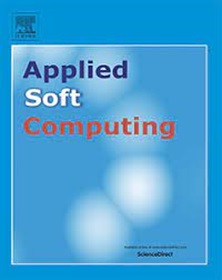IF 7.2
1区 计算机科学
Q1 COMPUTER SCIENCE, ARTIFICIAL INTELLIGENCE
引用次数: 0
摘要
图像分类是软计算的一个重要应用领域。在现实世界的许多应用场景中,图像分类器被应用于不同于原始训练数据的领域。这种所谓的领域偏移会大大降低分类精度。为解决这一问题,人们开发了无监督域适应(UDA)技术,以弥合源域和目标域之间的差距。这些技术通过将知识从有标注的源域转移到无标注的目标域来实现这一目标。我们开发了一种新颖而有效的从粗到细的域适应方法,称为 "通过特征分离进行域适应"(DAFD),它有两个新的关键组成部分:首先,我们的类相关特征选择(CRFS)模块将类相关特征与类不相关特征分离开来。这可以防止网络过度拟合不相关的数据,并使其更加专注于准确分类的关键信息。这降低了领域对齐的复杂性,从而提高了目标领域的分类准确性。其次,我们的动态局部最大均值差异模块 DLMMD 通过最小化来自不同领域的类相关特征之间的差异,实现了细粒度特征配准。现在,对齐过程变得更具适应性和语境敏感性,从而提高了模型识别特定领域模式和特征的能力。CRFS 模块和 DLMMD 模块的结合实现了类相关特征的有效配准。领域知识成功地从源领域转移到了目标领域。我们在四个标准数据集上进行的综合实验证明,DAFD 在跨领域图像分类任务中是稳健而高效的。本文章由计算机程序翻译,如有差异,请以英文原文为准。
Domain Adaptation via Feature Disentanglement for cross-domain image classification
Image classification is an important application area of soft computing. In many real-world application scenarios, image classifiers are applied to domains that differ from the original training data. This so-called domain shift significantly reduces classification accuracy. To tackle this issue, unsupervised domain adaptation (UDA) techniques have been developed to bridge the gap between source and target domains. These techniques achieve this by transferring knowledge from a labeled source domain to an unlabeled target domain. We develop a novel and effective coarse-to-fine domain adaptation method called Domain Adaptation via Feature Disentanglement (DAFD), which has two new key components: First, our Class-Relevant Feature Selection (CRFS) module disentangles class-relevant features from class-irrelevant ones. This prevents the network from overfitting to irrelevant data and enhances its focus on crucial information for accurate classification. This reduces the complexity of domain alignment, which improves the classification accuracy on the target domain. Second, our Dynamic Local Maximum Mean Discrepancy module DLMMD achieves a fine-grained feature alignment by minimizing the discrepancy among class-relevant features from different domains. The alignment process now becomes more adaptive and contextually sensitive, enhancing the ability of the model to recognize domain-specific patterns and characteristics. The combination of the CRFS and DLMMD modules results in an effective alignment of class-relevant features. Domain knowledge is successfully transferred from the source to the target domain. Our comprehensive experiments on four standard datasets demonstrate that DAFD is robust and highly effective in cross-domain image classification tasks.
求助全文
通过发布文献求助,成功后即可免费获取论文全文。
去求助
来源期刊

Applied Soft Computing
工程技术-计算机:跨学科应用
CiteScore
15.80
自引率
6.90%
发文量
874
审稿时长
10.9 months
期刊介绍:
Applied Soft Computing is an international journal promoting an integrated view of soft computing to solve real life problems.The focus is to publish the highest quality research in application and convergence of the areas of Fuzzy Logic, Neural Networks, Evolutionary Computing, Rough Sets and other similar techniques to address real world complexities.
Applied Soft Computing is a rolling publication: articles are published as soon as the editor-in-chief has accepted them. Therefore, the web site will continuously be updated with new articles and the publication time will be short.
 求助内容:
求助内容: 应助结果提醒方式:
应助结果提醒方式:


